Space. From Stanley Kubrick to Alfonso Cuaron, many filmmakers have tried to capture its atmosphere, but director Todd Douglas Miller dug through archives dating back to the iconic day of July 16, 1969, to truly make us witness it firsthand with his latest doc Apollo 11, a cinematic experience, unlike anything you’ve seen before.
The Sundance 2019 Special Jury Award Winning Doc is an incredible experience, unlike anything you’ve ever seen before in a documentary. During my time at this year’s Sundance, I got a chance to speak to Todd Douglas Miller about the process of bringing one of the greatest achievements in American History from 50 years ago to the big screen. With this interview, I present to you 5 reasons why you should see Apollo 11 in IMAX.
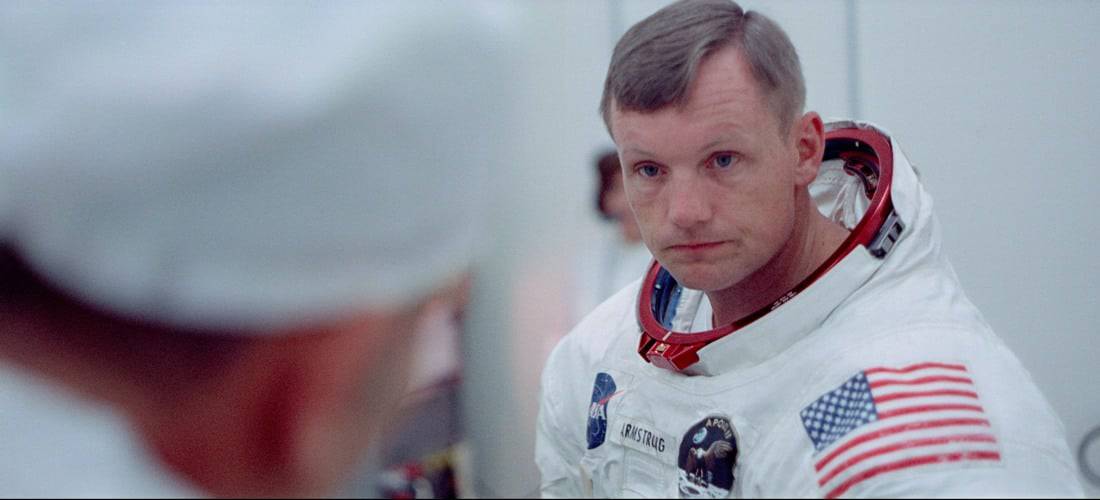
The Footage is All Public Access
When I sat down to talk to Miller, one of the first things I inquired about was where he got access to all of the footage for the film. Not only was he able to go into the national archives, but he informs that we all have access to them as well. Miller explains, “This footage belongs to all of us. It’s all public domain. It was all shot by NASA at the time, the repository for all of NASA’s— most of NASA’s films are materials which end up at the National Archives and Records Administration in various facilities. So it’s a patchwork, you know, a network of different facilities within the federal government, NASA and NOAA.”
Even according to the official NASA website, in their media usage guidelines they state:
“NASA content – images, audio, video, and computer files used – generally are not copyrighted. You may use this material for educational or informational purposes, including photo collections, textbooks, public exhibits, computer graphical simulations, and Internet Web pages. This general permission extends to personal Web pages.”
To watch a documentary that was made completely through pre-existing footage that was shot and preserved at the time is both extraordinary and inspiring for future documentary filmmakers. The fact that they have the ability to use various visual media forms for their own use without any copyright infringement is amazing.
“It was a little bit of a trick to find out where things were,” Miller explained. “Over the course of the years, we kind of figured out where stuff was. For instance, the main bulk of all the large format stuff was housed at national archives in DC. A lot of the what we call the 70mm 10-per-inch engineering film, for all those great slow-mo shots from the liftoff and launch, are all housed predominantly at Marshall space flight center down in Huntsville, Alabama.”
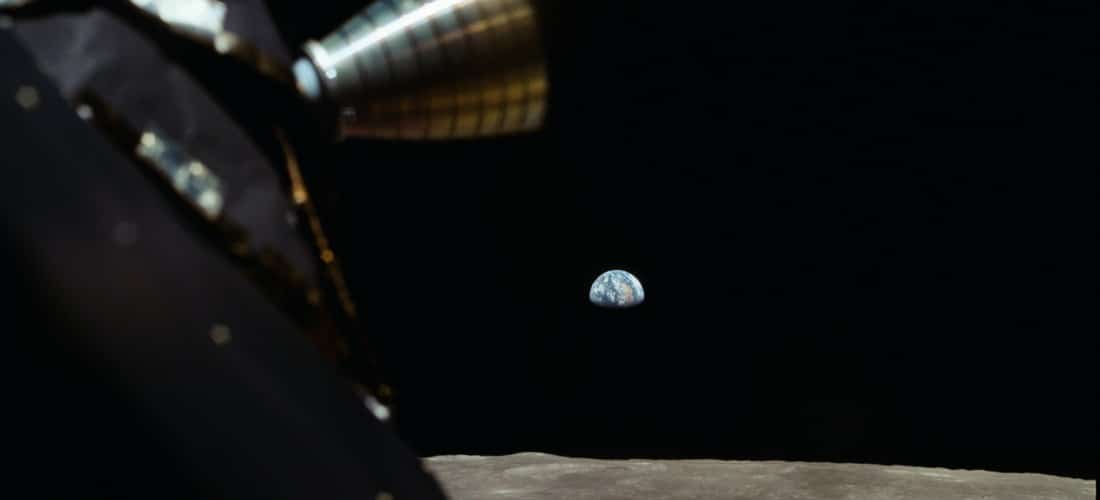
The Film Restoration is Out of This World
From the opening shot of the film, one of the first things you’ll notice is the crisp and sharp quality of footage that brings 1969 to a 2019 audience. In order to deliver the Apollo 11 mission in a presentable fashion, materials had to be made to scan all of the footage Miller had to get. Miller says, “First of all, we had to scan all the materials. And so that was made from a custom-built prototype scanner. There’s only one in the world. It was manufactured specifically for this project. So that was all custom hardware, custom software, the workflow on the backend. So, the large format materials were being scanned — 8k resolution on the shot. Some people said we were nuts to go all the way up to 4k with some of it, but certainly, there was still some information that can be gained by scanning that high resolution.”
Due to this custom-made scanner, the film’s 8K quality gives the film a bright, beautiful look and makes you question if you stepped into a time capsule or not. Because of the 8K resolution, the film makes you feel as if you were transported to Cape Canaveral, FL and launched into space alongside the astronauts. “On the back end, the storage was very expensive custom hardware to be able to handle the bandwidth for that,” explains Miller. “But then, from the post house, we did proxy a 4K of all the 8K stuff, which I used to edit just on normal rate raider a drives the software I used. We did all of the conforming and all of the grading and all the restoration of all the materials, it’s all custom software that team has. So, I do my cutdowns, you know, that we match frame for frame back to the 8K too because they make it sweet.” Just imagine the long process of rendering all this footage and converting it only to edit all of this footage. Incredible, right?
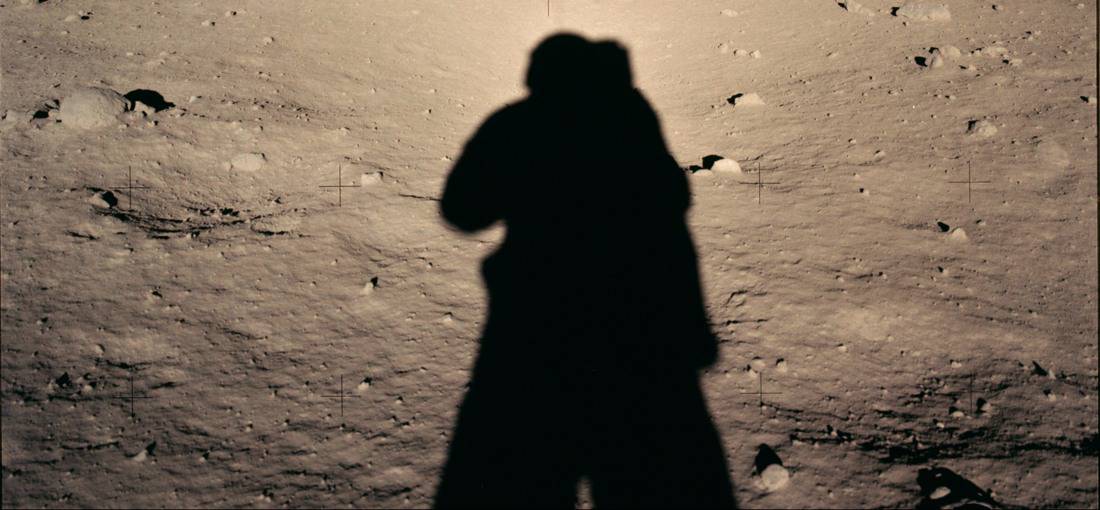
No CGI Required
The visuals of Apollo 11 are comprised of footage taken from the many cameras installed throughout the mission from the Mission Control in Houston to the spacecraft Armstrong, Aldrin, and Collins rode on. When you watch the moon landing, it’s a contemplative sequence that will take your breath away. It truly delivers the cinematic experience you’ll expect to see.
When talking about the editing process of the film (made through Adobe Premiere, no less) Miller says, “It’s really all about transition. It took me a long time, you know, being an editor to figure it out. It’s a lot of experience-based stuff to sit in an editing room and try to figure out what those transitions are. That’s when those types of shots I’m determining which— which shots become important.”
Because of the various shots Miller chose while editing, the moon landing sequence comes out to be chilling – no CGI required. There are several video graphics used to express the layout of the five-day journey, but other than that all of the 100% fresh footage taken straight off the cameras of the Apollo Lunar Module are all in 65mm. If you’re a cinephile, hearing the term “presented in 65mm format” will make the hairs on your skin stand up, believe me when I say the format makes for an even more incredible cinematic experience.
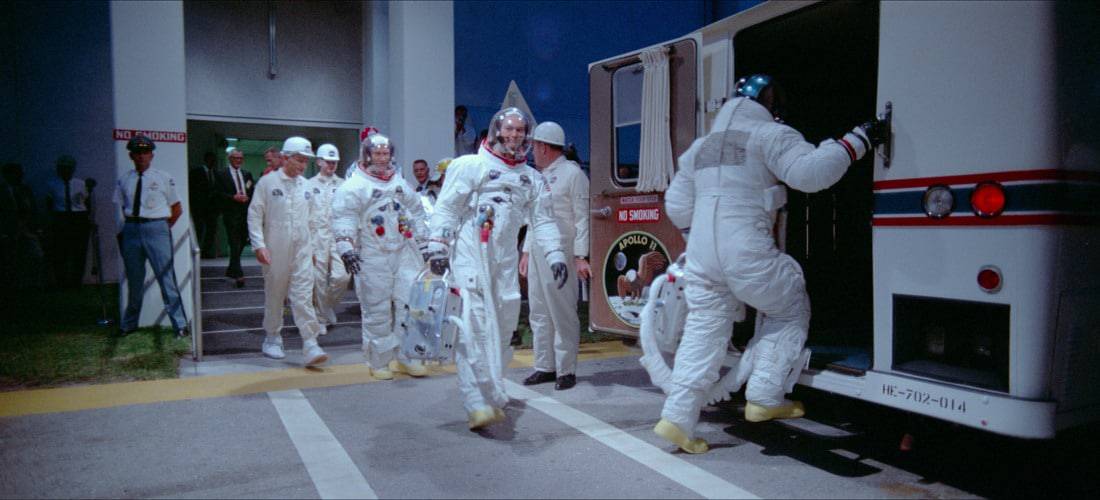
Brilliant Sound and Score
From the rumblings of the Apollo spacecraft during liftoff to the radio static between the control centers, the audio of the film is top-notch. Miller said, “Everybody’s got their own little thing. We did a 5.1 mix, then we also added a high IMAX 12.0 mix for audio so that, you know, our large format IMAX sound mixer, from a team in Toronto and another down in New York, so it’s kind of a mixed bag of like custom and off-the-shelf stuff. Sometimes some of that off-the-shelf stuff is like, the best thing, but certainly dealing with these materials and the team Final Frame in New York are just wizards. Absolutely tech wizards. The head guy did all the 3D stuff for the Transformer films and Pirates of the Caribbean so it was great. I mean, we couldn’t have done it without those guys. It was an incredible technological feat.”
So, imagine an audio system that rivals some of the biggest blockbusters of the year made by the people in charge of the DCP and the sound mixing of them as well.
Then, the film even includes a masterful score by composer Matt Morton who worked with a rare synthesizer, a classic 1968 Moog Synthesizer IIIc, which adds another layer of authenticity to the film. Later in the interview, I asked how Morton was able to obtain it.
Says Miller: “That is a crazy story. I mean, Matt is— first of all, I’ve known him since we were kids. He’s my longest collaborator. He’s so important to everything I do. Uh, you know, I like having music-driven films so our last film Dinosaur 13 was very music-driven to the point where it was almost overkill, but we wanted it to be overkill you know. I wanted it to be an emotional experience. Told in a kind of a point of view, which in this case was people that discovered these amazing dinosaur fossils. So, with this thing in the last film and other things we do, we usually post-score at all. So I’ll cut something with temp music, he plays with it, puts it on the wall, sees if it sticks and then go back, work on this again.
Matt has carte blanche to do whatever he wants. So, it’s up to him and we work very closely. He’s very cerebral, smart, and he just brings so much to the table. He’s just such a wonderful collaborator and he said, ‘I want to do a period score with the modern composition and I want to do it with this 1968 old synthesizer’ and I go, ‘You want to do what? You don’t even know what that is or how to play!’ And he’s like, ‘We’re going to learn.” So with that, he just went off, got this thing and there was like one of 25, that got reissued years ago. He learned how to do it and basically, the thing we didn’t know was if it would work or not. So, he would pre-score the entire film for the most part and I would get like these like hour-long compositions which, from an editing standpoint, was amazing because it allowed me the freedom to just pick and choose like, little parts so it was so free. That started our working relationship in a new way, but it was absolutely fantastic and I think the results speak for themselves. There are certain things that we didn’t have either an emotional kind of hook or just something was missing there. Like, anytime they did any of the burns or any kind of maneuvering then the score could compliment that so very great and it was the perfect choice to do a synthesizer. It makes it much more of a time capsule from his work.”
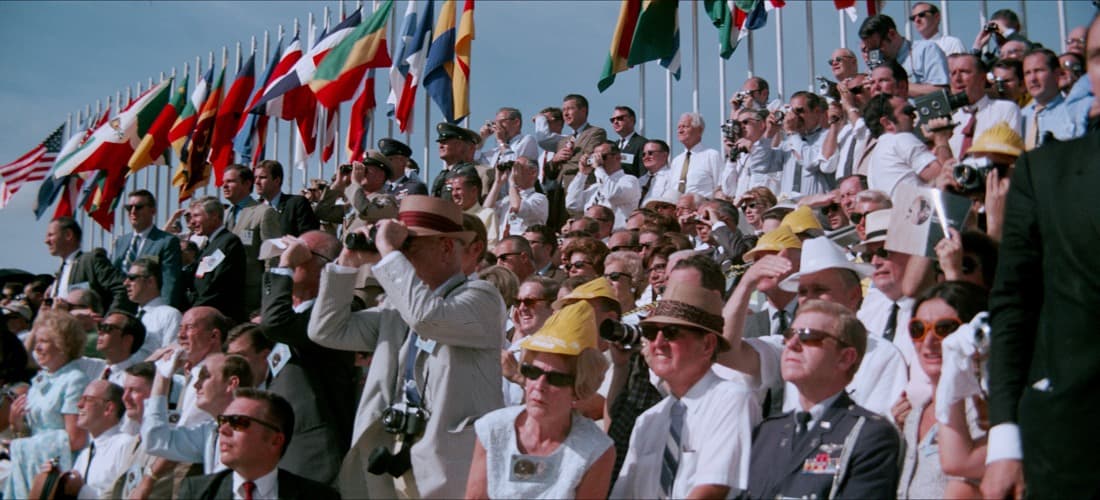
IMAX Helped Set Them Up for Success
The film took several years of development to make and every time footage needed to be tested Miller would often go to the IMAX theater located in D.C. to see if all the kinks worked. “The first kind of place that we wanted to test all the footage on was the IMAX screen down at the Smithsonian Air and Space in D.C,” Miller said. “It was a natural fit because the national archives were there. It’s an old school IMAX screen, so it’s got its quirks, it’s one of the first IMAX screens in existence. So, we knew if it looked good there, it’ll look good everywhere. So, we worked with the IMAX Smithsonian quite a bit— every time we’d get a new cut for the first 20, 30 minutes. It’s also where we screened the film for astronauts and some of the government higher-ups who were working with us. IMAX has certainly been a major part of the film as far as testing.”
For 6 years, Todd Douglas Miller has been working on this passionate project in hopes to take audiences to a moment in time when we were last united as a nation. The film may be classified as a documentary, but Apollo 11 is an incredible cinematic experience that completely reshapes the medium of the documentary genre, for it bears absolutely no interviews and is presented as a normal narrative feature. Editing all five days of the mission, from the start of the launch to the landing on the moon, is a technical accomplishment that you won’t want to miss, especially in the large premium format. So, before Captain Marvel heads to IMAX this weekend, be implored to see Apollo 11 ASAP.
Be sure to check it out March 1st in select IMAX theaters now and March 8th nationwide.
The post Drop Everything and See ‘Apollo 11’ in IMAX appeared first on Film School Rejects.
0 comments:
Post a Comment